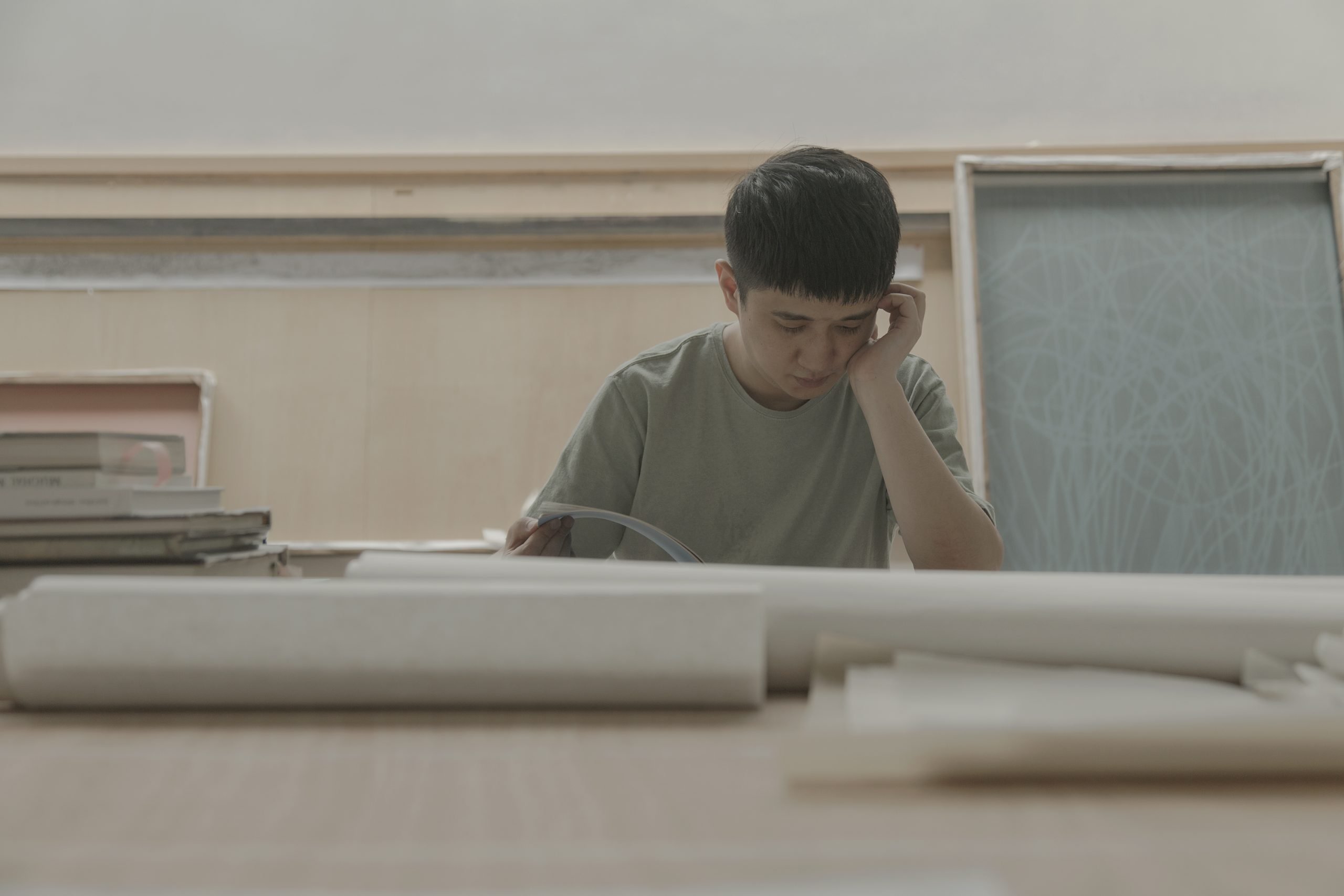
Chinese artist Hao Liang (b. 1983) is currently the subject of a solo exhibition, “The Sad Zither,” at Gagosian in London—his first in Europe and his first with the gallery since his 2018 solo at Gagosian in New York. Employing traditional ink-based methods and techniques, Hao is known for contemplative and deeply emotional compositions that draw themes and symbols from literature and poetry, both historical and contemporary, to reflect on the complex and often nostalgic ways we move through the world. Comprised of 13 paintings that were made over the past two years, the exhibition explores a wide range of writing, from authors like Dante and Argentinian novelist Jorge Luis Borges to Chinese poets Tao Yuanming and Du Mu.
We recently spoke with Hao to find out more about his long-anticipated exhibition and how he foresees his practice evolving.
Installation view of “Hao Liang: The Sad Zither” (2023). Photo: Lucy Dawkins. Courtesy of Gagosian, London.
Your solo show “The Sad Zither” opens at Gagosian this month. Can you talk a bit about the exhibition, and the inspirations or themes behind it?
I have always been enchanted by classical Chinese poetry. As traditional Chinese paintings pursue an aesthetic sense of “conjuring a picturesque image in a poem, and experiencing a poetic sentiment in a painting,” I have been looking for a breakthrough based on this foundation. Though Li Shangyin’s enigmatic and riddle-like poem “The Sad Zither” has attracted various interpretations, I prefer Qian Zhongshu’s analysis in On the Art of Poetry (1948), in which he references metaphysical and historical studies that resonate with personal background and emotions. This coincides with my state of mind throughout the years, which slowly affects my practice in painting. In turn, I have also been documenting my ups and downs with painting, and it has since become my emotional sustenance.
Installation view of “Hao Liang: The Sad Zither” (2023). Photo: Lucy Dawkins. Courtesy of Gagosian, London.
In what ways do your newest works continue or deviate (either thematically or conceptually) from those in your last solo show with the gallery, “Portraits and Wonders,” in New York?
It has been five years since the last exhibition, and the real-life situation has changed drastically—my overseas communications were on halt for three years. Yet I never stopped creating. The works this time are of course an extension from my previous works. I have completed three series in which I put more focus on encounters in reality, and even more so on a yearning to break free from reality—a dilemma that motivated my production.
Can you describe your process and the techniques that you use?
My inspiration comes fortuitously, but I seldom put it to work right away. It is a lot of thinking and scrutiny before I can find the most appropriate way of presentation. As for my techniques, by employing the traditional shuǐ-mò (water and ink) and Xuan paper, I also strengthen the texture and the uniqueness of ink wash painting.
Hao Liang, Spring and Emaciated Horse (2022). © Hao Liang. Courtesy of Gagosian, London.
What role does literature play in your practice overall?
Literature is one of my sources of inspiration, also a treasure trove in which I borrow ideas and even creative methods.
Has the dichotomy between Eastern and Western artistic styles and techniques affected or influenced your oeuvre?
I do not really mind the differences; rather, I have been searching for the root cause of the shared similarities between the discernibly dichotomous styles.
Are there any artists, either historic or contemporary, that have influenced you?
There are many artists that have influenced my work.
What are you working on next? Are there any themes or ideas that you are hoping to engage with?
I am hoping to continue the direction of some works in this exhibition; some paintings are only the beginning, for example All things (2022).
Hao Liang, All things (2022). © Hao Liang. Courtesy of Gagosian, London.
“Hao Liang: The Sad Zither” is on view at Gagosian, Grosvenor Hill, London, through March 18, 2023.